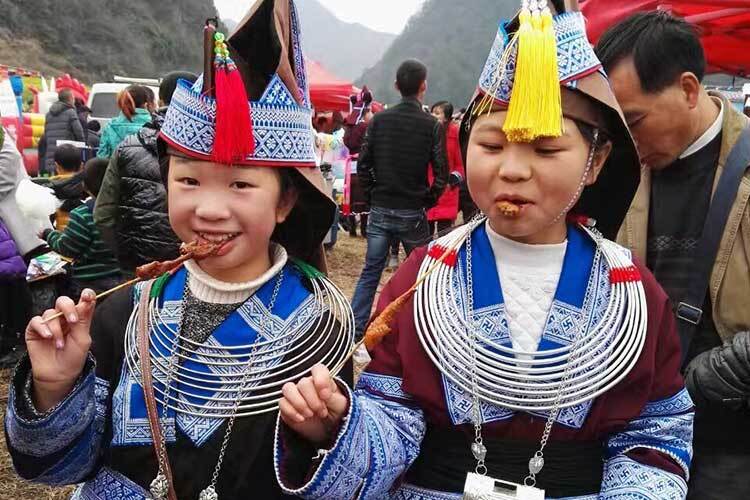Chinese Ethnic Groups
The majority of people in China belong to an ethnic group the Chinese state calls Han. For the rest, the population divides up between some 55 ethnic minorities. The Chinese term for these ethnic groups is Shaoshu Minzu. It means literally "minority nationalities".
During the 1st century BC, Han emperors widened their influence westward and in the South of the country. It made China a multiethnic nation.
From this time, the Chinese culture was going to grow rich in many foreign fundamentals. During the Tang dynasty (618-907), China assimilated influences coming from all Asia and even Mediterranean countries.
The capital Changan (Xi'an) was the biggest city in the world. In the North, the various ethnic groups united gradually during two millenniums.

Traditionally, the Chinese did not recognize geographical borders and had no racial prejudices. They consider anyone who has embraced Chinese culture and the Confucian code of conduct to be Chinese.
People did not fit in the Chinese Empire for ethnic or historic reasons but by cultural identity, by a way of thinking and behavior to the others.
With the succession of the modern Chinese nation, the attitude to "the foreigner" was modified. The Han had to decide if ethnic minorities must be assimilated or handled by independent peoples.
It was a question of giving them the right to establish their own republic, connected to the state by a federal system. Or it was a question of immortalizing the traditional Chinese concept of strong centralized power.
In the first half of the 20th century, China pursued a policy of assimilation. The National Government of Chiang Kai-shek (1928-1948) considered ethnic minorities as an integral part of the Chinese people.
Sooner or later, the Chinese people would become part of a unified nation. However, some ethnic minorities tried to gain independence. Their struggle became a reality with the declaration of the East Turkestan Republic (ETR) in the 1940s and the establishment of an independent Tibet between 1911 and 1951.
The government has a similar, identical policy towards all of them and applies "positive discrimination". It's just to protect the culture and the language of the "non-Han" peoples.

One of the most important things to note about China's ethnic minorities is their diversity. Some have distinctive cultures, languages, and religions that are very different from those of the Han Chinese.
For these and other reasons, ethnic minorities are actually much more important to China than a small percentage of their population.
The government has a similar, identical policy towards all of them and applies "positive discrimination ". It's to protect the culture and the language of the "non-Han" peoples.

